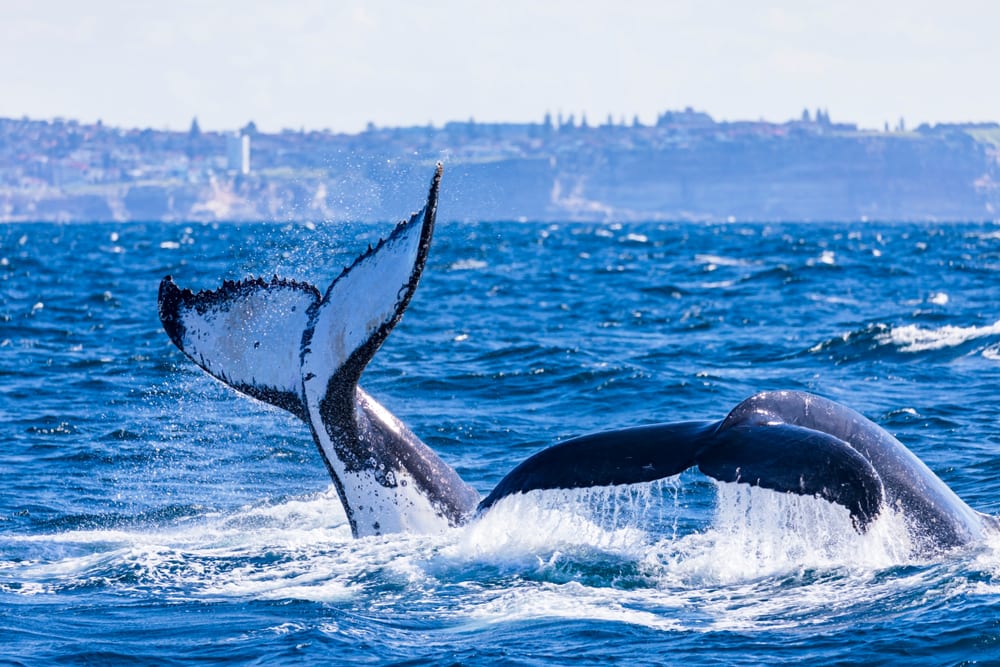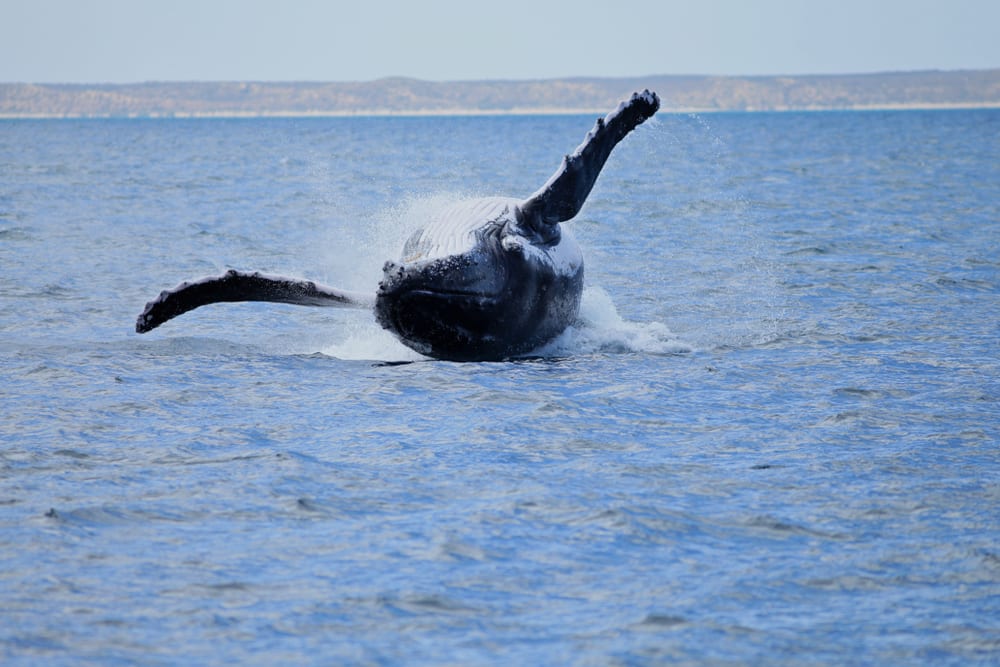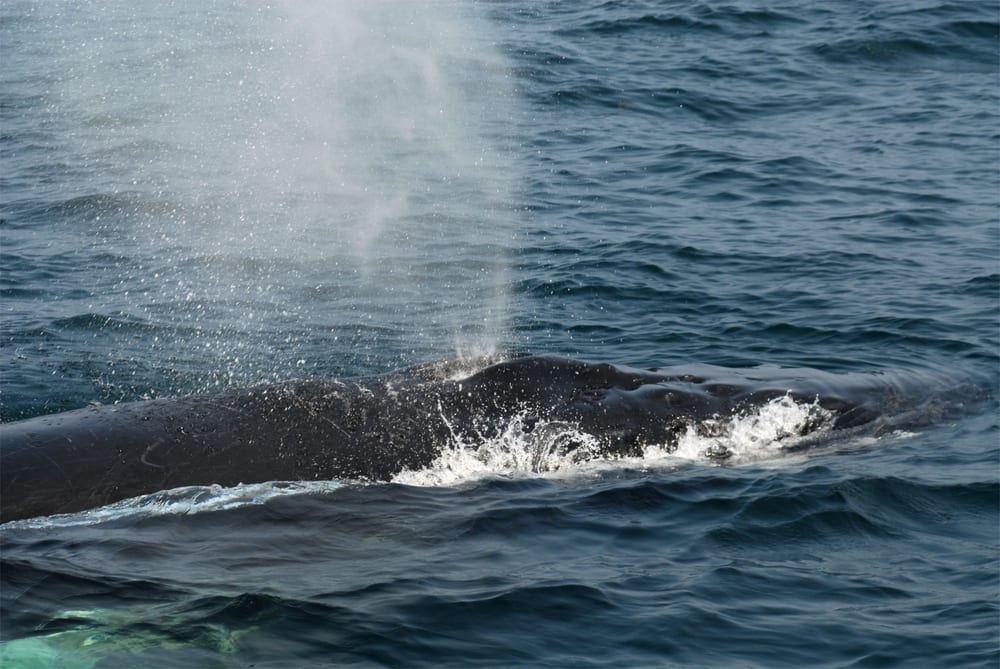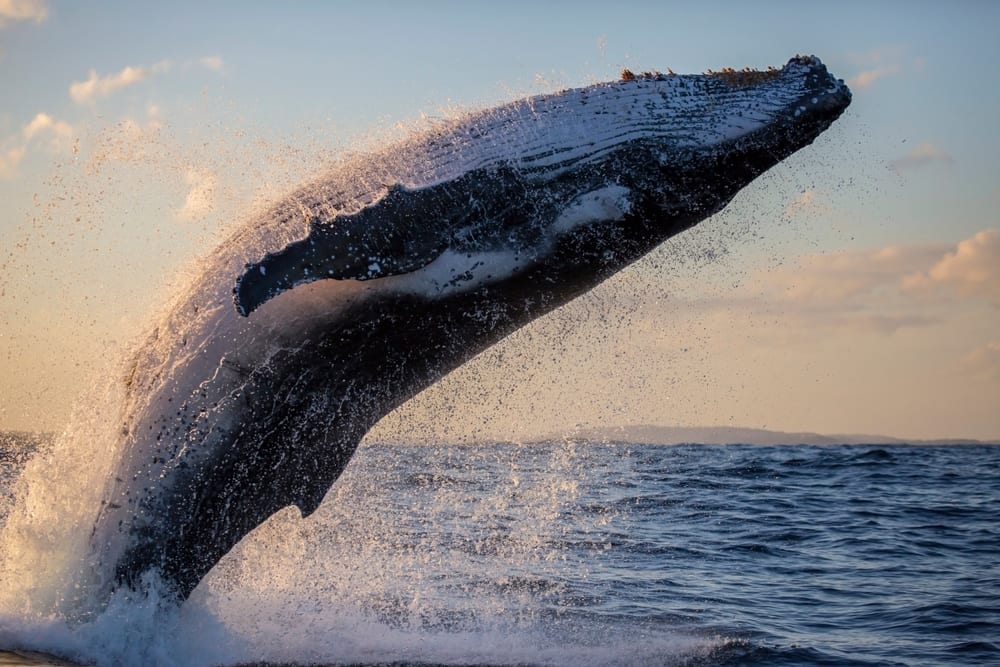Could it be? A flicker of something on the coastline? A dark shape beneath the surface?
Every year, humpbacks and southern right whales migrate up the east and west coasts of Australia from Antarctica to breed. These wild gentle giants are social, peaceful and otherworldly, and to catch a glimpse feels like winning nature’s lottery.

Station yourself at a lighthouse lookout or hop on board a dedicated whale-watching cruise to improve your chances of a run-in with the biggest creatures on earth.
WHERE – Follow Australia’s Whale Trail
1. The East – New South Wales’ best vantage points
From May to October, the New South Wales coast turns into humpback highway when more than 20,000 whales pass by offshore. Australia’s easternmost point, the Cape Byron Lighthouse at Byron Bay is a good starting point. Head south to Port Macquarie, where you can stop at viewing platforms along its nine-kilometre coastal boardwalk.

Cape Byron lighthouse. Credit: supplied
The 360-degree views are so stunning at Newcastle’s Nobby’s Lighthouse that you won’t mind if you don’t spot a whale and you can read about whale-watching in Port Stephens here. On the Central Coast you’ll often spot whales off the Skillion at Terrigal or from one of the cliff-top or beach walks in Bouddi National Park.
In Sydney itself, plant yourself at aptly-named Whale Beach or at Cape Solander in the Botany Bay National Park, where whales are often seen 200 metres from the coast. The ever popular Bondi to Bronte walk is a firm favourite if you don’t mind battling crowds. But if you want a little more space, head to the northern beaches and try North Head, the Freshwater headland or the golf course walking path at Long Reef.

Tail slapping and diving humpback whales on the northern migration just off Sydney’s eastern suburbs. Credit: Shutterstock
As you go south from Sydney, you usually have better than average odds of spotting whales on one of the the Royal National Park walking trails. Of pull out the picnic blanket at Stanwell Tops and watch the hang-gliders and whales at the same time. And if you don’t want to pack your own lunch, grab a table in the beer garden at the very family-friendly Scarborough Hotel just north of Wollongong where you’ll often spot whale tails not too far from shore.
Finish off in Merimbula or Eden on the southern Sapphire Coast to learn about Australia’s whaling history at the Eden Killer Whale Museum. The museum boasts the only complete orca skeleton in the Southern Hemisphere. And what’s great about the far south coast is that the whales often take a little rest in the sheltered bays before heading across the open ocean to Antarctica. So if you go towards the end of the season (September) you’ll often see mothers and calves frolicking super close to shore rather than cruising at pace along the coast.

Whale skeleton at the Eden Killer Whale Museum. Credit: Supplied
2. The West – where to go in Western Australian
Whales come to Western Australia’s hefty ocean border to play and take a break from their epic swim along the continental shelf. The waters of Flinders Bay in Augusta should be your first port of call. Esperance and Albany, or Exmouth, Broome and the Kimberley offer the best vantage points as the season progresses. From September to December, catch the majestic mammals at Geographe Bay and Perth when they make their return journey.

Take your marine adventures to the next level 60 kilometres out to sea from Bremer Bay. At Bremer Bay Canyon, you can enjoy a close encounter with the Southern Hemisphere’s largest killer whale pod.
The Ningaloo Coast’s newly launched humpback swim is also become a huge highlight for visitors to the region. The swim runs from August to October after whale shark season ends.

Humpback whale breaching Coral Bay Western Australia. Credit: Shutterstock
HOW – Top Tips and Facts about Whale-watching
Fully grown humpback whales range from 12 to 20 metres long, but that doesn’t always make them easy to see. How do you increase your likelihood of a sighting?
1. Movement – Not sure if that dark-coloured mass is a whale or just seaweed? Pay attention to its movement. Does it break the surface continuously, disappearing and reappearing? Are there big splashes or disturbances in the water? If the answer is yes, it might just be a sea creature. Whales are constantly in motion, launching themselves in and out of the ocean as they feed, communicate and breathe.
2. Boats – whale-watching cruises often know exactly where to look. Scanning the waters around groups of boats might help you notice what their captains have already discovered: whales! Go a step further and go on a whale-watching cruise. Try Nova Cruises in Newcastle, Hervey Bay Whale Watch in QLD, Whale Watching Sydney, Whales in Paradise or Wild About Whales.
3. Blows – a fountain of water spouts from a whale’s blowhole every time it breathes. Easily visible from vast distances, it is the biggest giveaway of whale whereabouts.

A Humpback blowing out air at the surface. Credit: Shutterstock
4. Spyhopping – if you see the head of a whale poking slightly out of the water, it’s spyhopping. With its eyes just above or even below the surface, the whale investigates its surroundings without having to dip and dive for air.
5. Lob-tailing – when they want to impress, intimidate or just communicate, whales often slap their giant tail fin against the surface of the water. Listen for loud claps and they could lead you to a pod of humpbacks with a lot to say.
6. Patience – whale-watching is all about patience and dedication. Even if you spot a spurt of water or a flicker of fin, it could be 15 seconds or 15 minutes until the whale surfaces.

Sunset breaches near Sydney. Credit: Shutterstock
7. Binoculars – magnified vision can’t hurt when you’re scanning the horizon.
READ MORE
Road Tripping the South Coast: Sydney to Eden
Waves and Whales and Western Australia’s best beaches
Janeece Keller is the founder and editor of Family Travel. She mostly travels with her husband and two young kids. She has a large blended family that lives in Australia and Europe. She has visited 52 countries and lived on 3 continents. From camping to luxury resorts Janeece tries to make sure her family has diverse holiday experiences each year. She is an avid hiker and ocean swimmer who loves good food, margaritas and heading off the beaten path.
